AIGA Corporate Leader Warby Parker
Founded in 2010, Warby Parker is recognized for changing the eyewear industry by pioneering ideas, designing products and experiences, making proper vision care more affordable and accessible, and for leading the way for socially conscious businesses.
New York artist Stephen Powers, also known as ESPO, installing his artwork at Warby Parker's North 6th St. store in Brooklyn. Video courtesy of Warby Parker.
Words by Warby Parker. Published on May 4, 2021.
Warby Parker was founded with a mission: to inspire and impact the world with vision, purpose, and style.
The brand accomplishes this by reimagining everything that a company and industry can be—while incorporating design in everything they do. This means creating beautiful, high-quality products that people love and making them affordable. It means inviting people into carefully crafted spaces (both digital and physical) that are not only easy to navigate, thoughtfully designed, unexpectedly fun but also flavored with contributions from a diverse roster of visual artists, writers, and musicians. And it means using creativity, empathy, and innovation to consistently surpass customer expectations. Warby Parker believes that good design is as accessible as it is treasurable, and that it makes the world a brighter, better, and happier place.
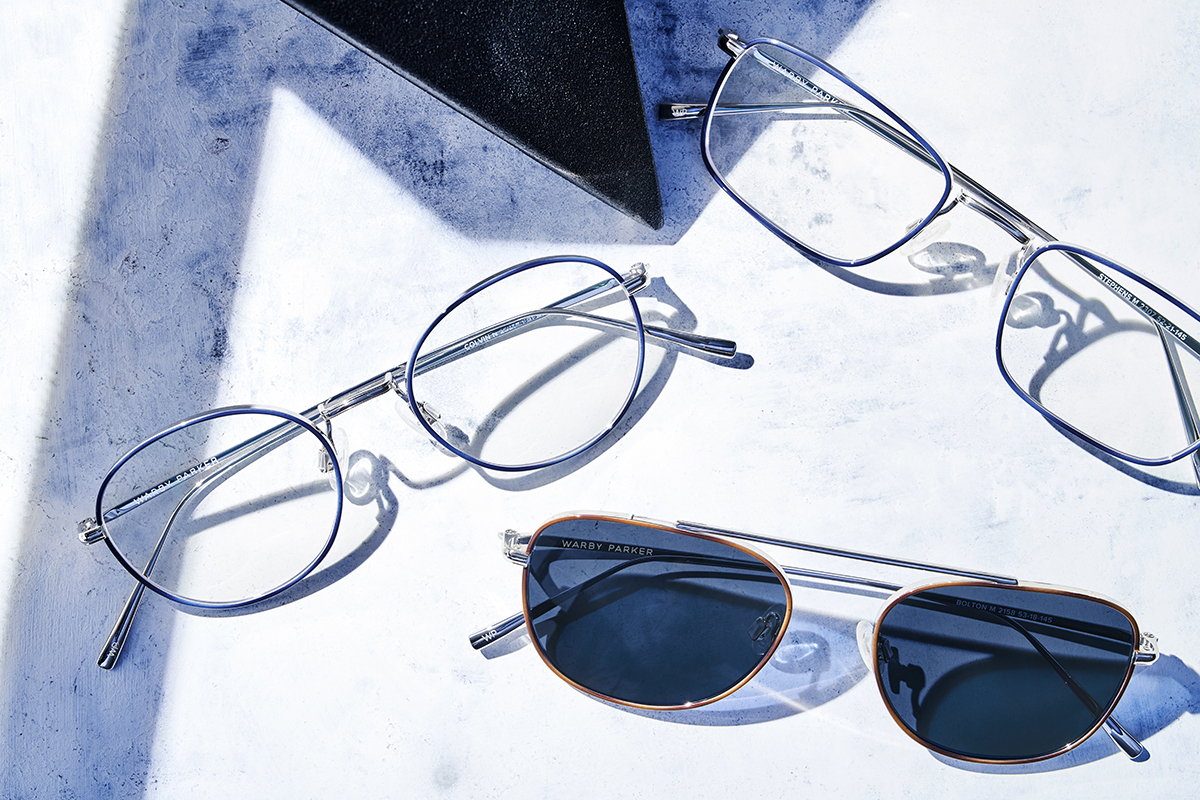
Warby Parker's Eshi Edition collection. © Warby Parker
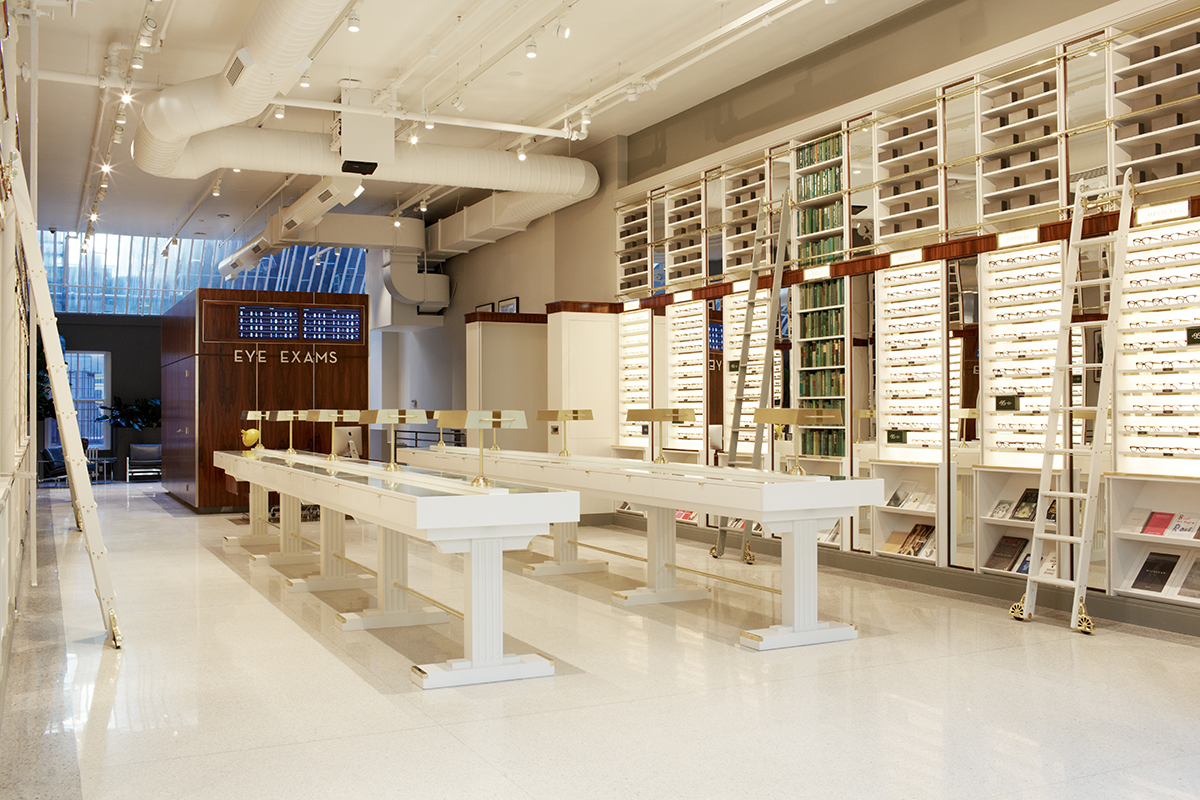
Warby Parker's Green Street store in New York. © Warby Parker
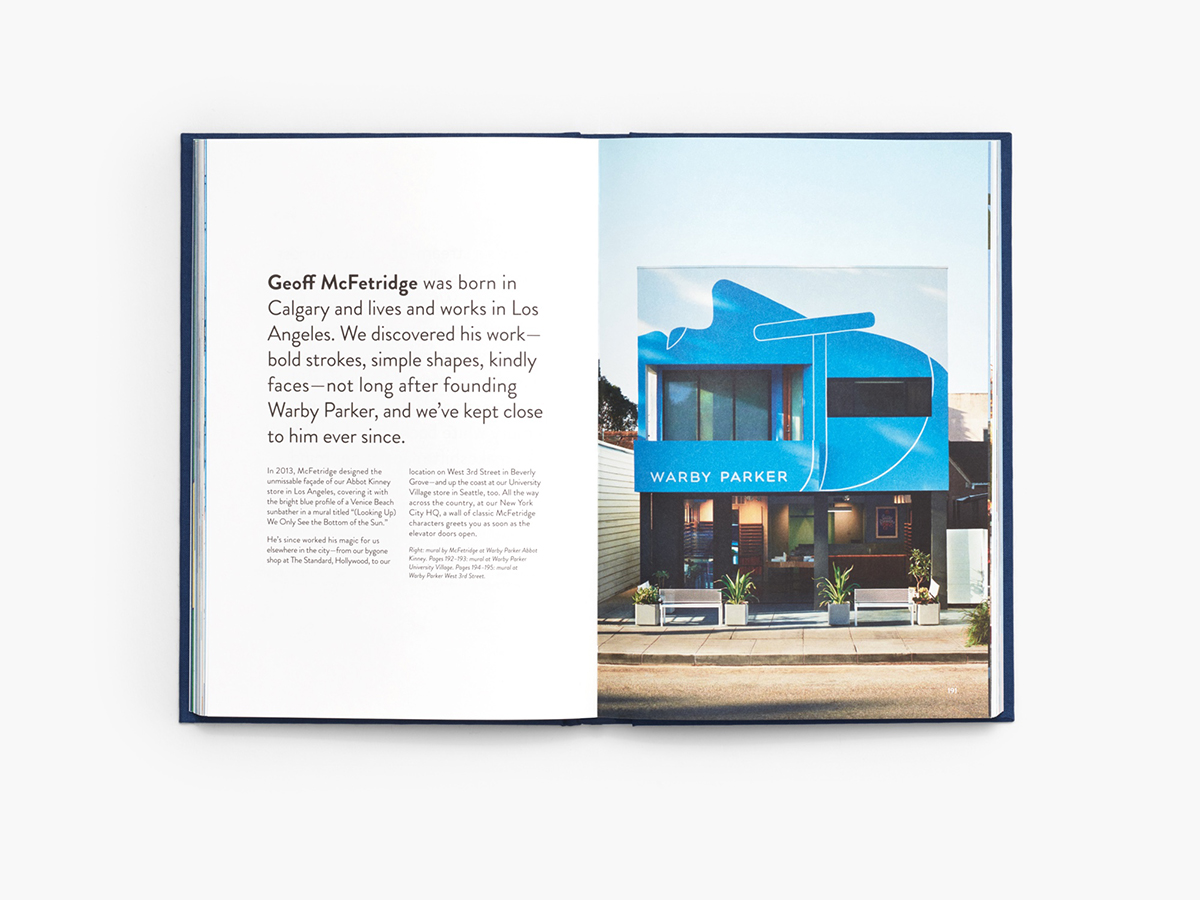
Warby Parkers' retrospective 10-year art book, "The Alphabet at Warby Parker." © Warby Parker
Since Warby Parker’s founding in 2010, art and design have been core components of their mission to provide holistic vision care. Daily, their in-house design teams use their own artistic abilities to dream up a variety of projects: the frames in their eyewear collections (including a few trademarked features); the patterns of the innovative flat packs for Scout contact lens; the illustrations peppering their website; and the visual layout of their stores, offices, and optical lab. (Their track record for physical spaces runs the gamut, from a full-scale library in their New York City headquarters to an immersive 13-piece, illusion-inspired mural in their Miami Design District store.) They’ve also commissioned hundreds of original pieces big and small, by artists from Portland to Pittsburgh—and commemorated a decades’ worth of these projects in full-color, 352-page collection The Alphabet of Art at Warby Parker. Whether they’re incorporated into a retail store, collection launch, or optical lab, the one-of-a-kind works have brightened city blocks, enlivened customer’s mailboxes from season to season, and generally beautified the world of Warby Parker.
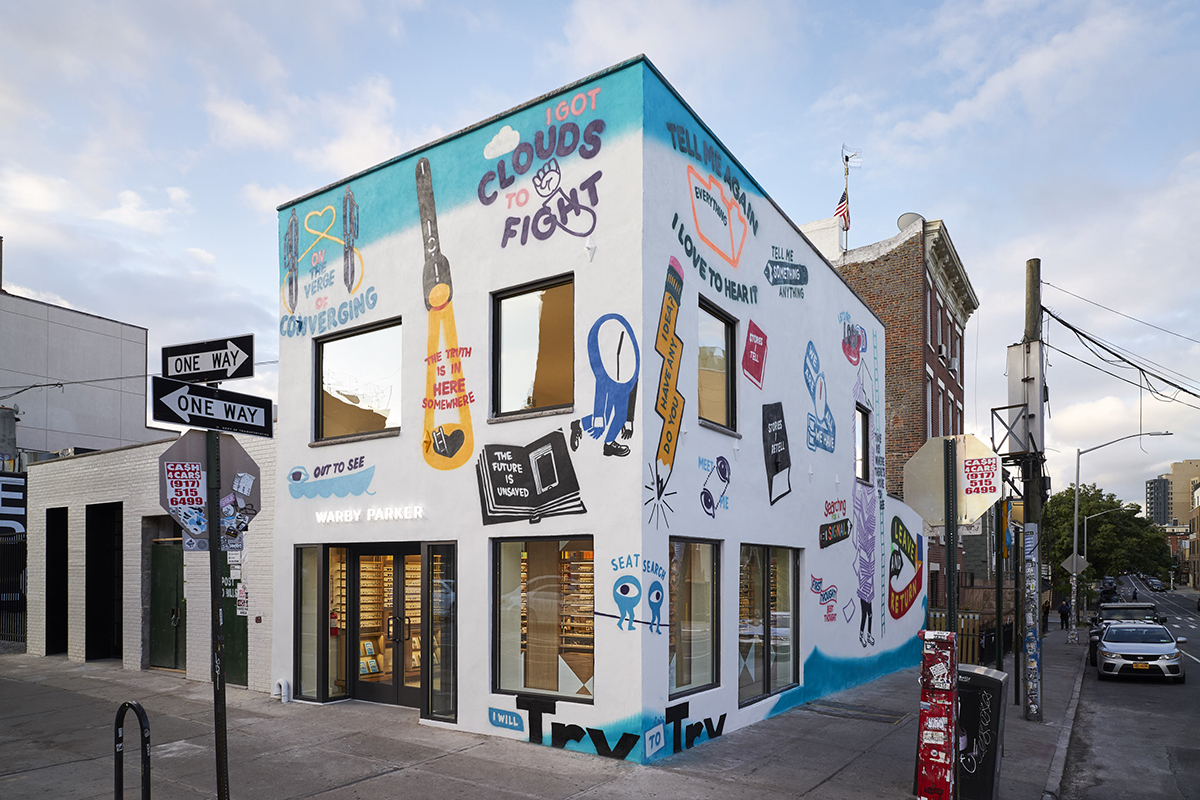
Warby Parker's North 6th Street store in Brooklyn, with artwork by New York artist Stephen Powers, also know as ESPO. © Warby Parker
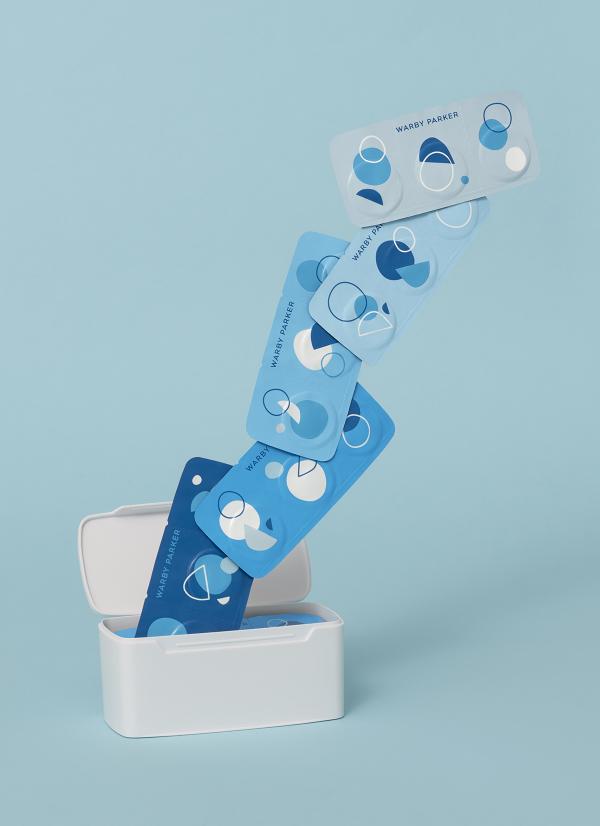
Warby Parker's first brand of daily contact lenses, Scout by Warby Parker. © Warby Parker
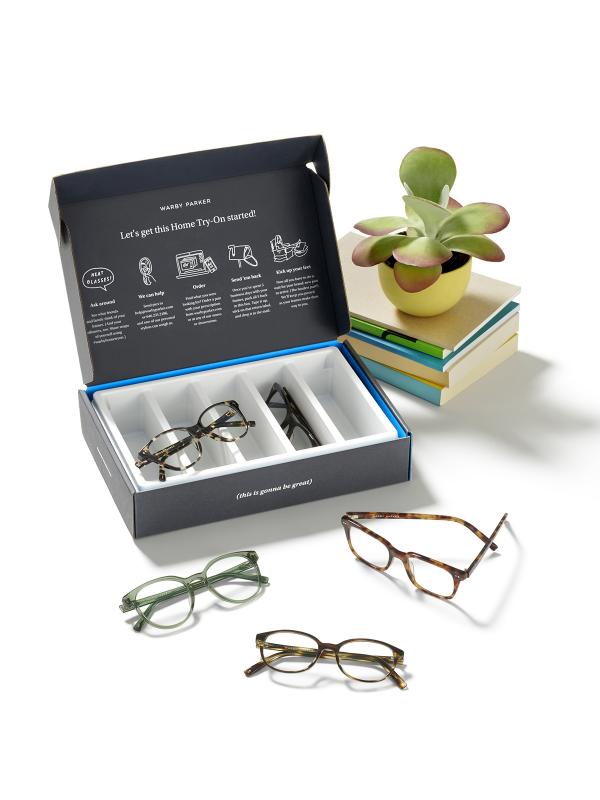
Warby Parker's Eshi Edition collection © Warby Parker
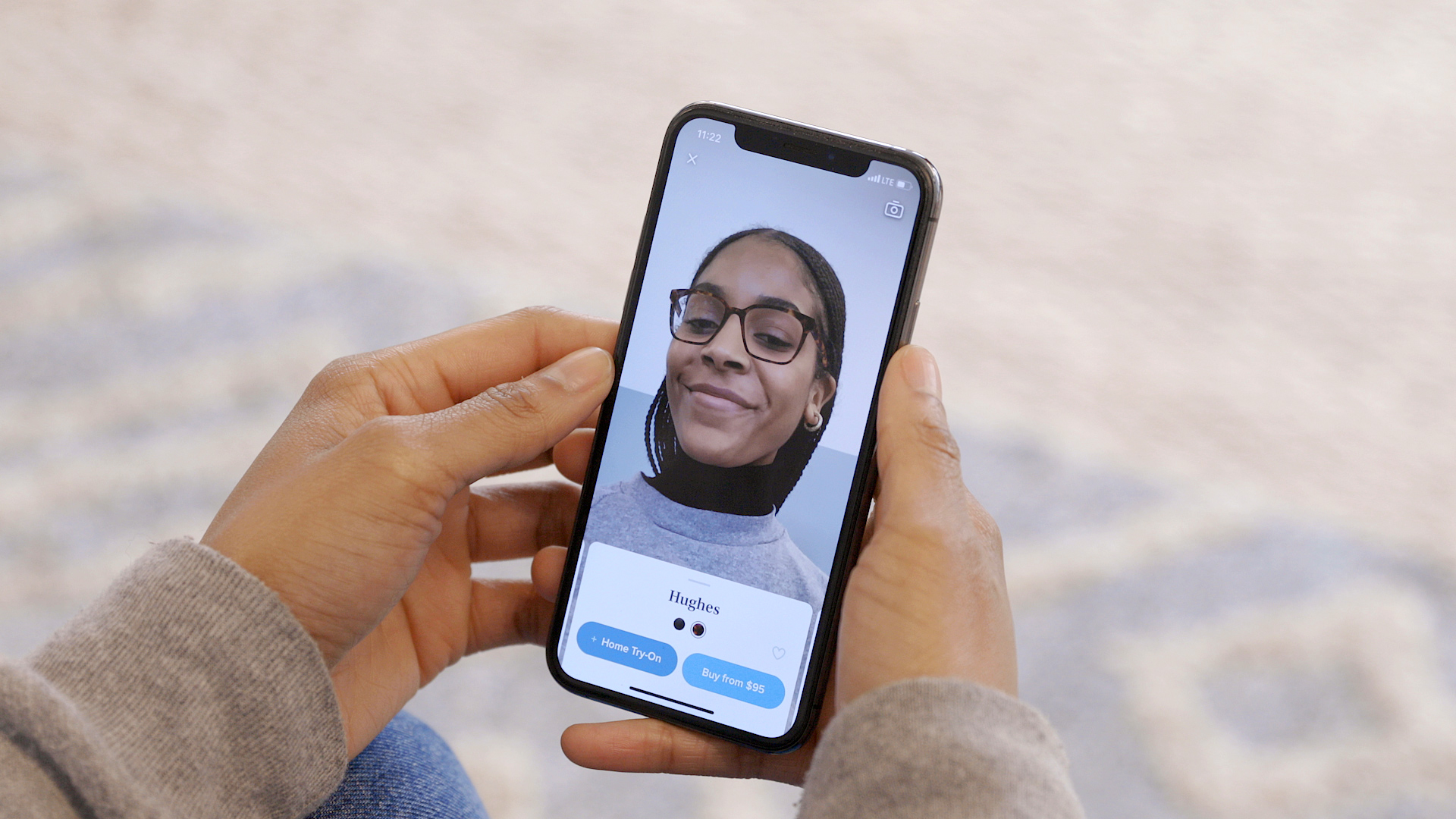
Warby Parker's Virtual Try-On tool. © Warby Parker
However Warby Parker brings design into the fold, their values to connect with their communities and do good drive their every endeavor. In 2018, alongside 10 inspiring New Yorkers, Warby Parker designed a collection set of glasses in support of Pupils Project, their program that helps bring free glasses to schoolchildren in need. That same year, they also partnered with eight artists from New York City and Los Angeles to rethink the hand-held mirrors found in all Warby Parker stores. Their creations were displayed in stores in the two cities, then auctioned off with all proceeds going to Free Arts. In early 2020, Warby Parker invited the neighborhood and beyond to the ultimate 10th birthday party by their New York City flagship store (customers across the country celebrated locally with a cornucopia of candy in stores). With bouncy houses, arcade games, cotton candy, and a drumline, it was a celebration to rival only their 2015 Half-Decade Parade, in which ballerinas, a marching band, employees, and more strode up and down an alleyway in the biggest smallest parade ever. Last fall, to recognize National Voter Registration Day with BallotReady, Warby Parker introduced Buddy the Blue-Footed Ballot, an illustrated, fictional—yet very knowledgeable—guide to the presidential election. The brainchild of the brand’s unofficial mascot, the blue-footed booby, and passion for civic engagement, Buddy peppered a range of resources, including an animated video, about planning when, where, and how people can vote.
As Warby Parker continues to pioneer ideas, design products, and develop technologies that help people see, art and design will remain tools to communicate and enrich their mission.
Building Partnerships With A Vibrant Community
The National Partnership Program is about leadership, relevance, and impact—with, within, and through design—to build and sustain programs, initiatives, and resources that champion a more contemporary and inclusive profession.